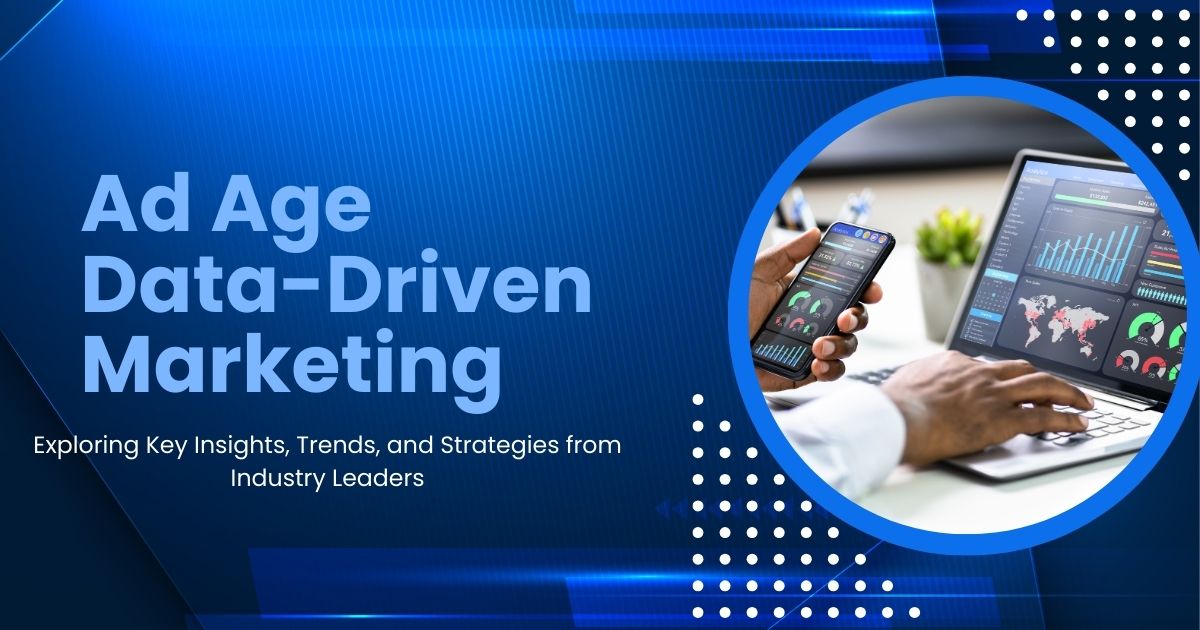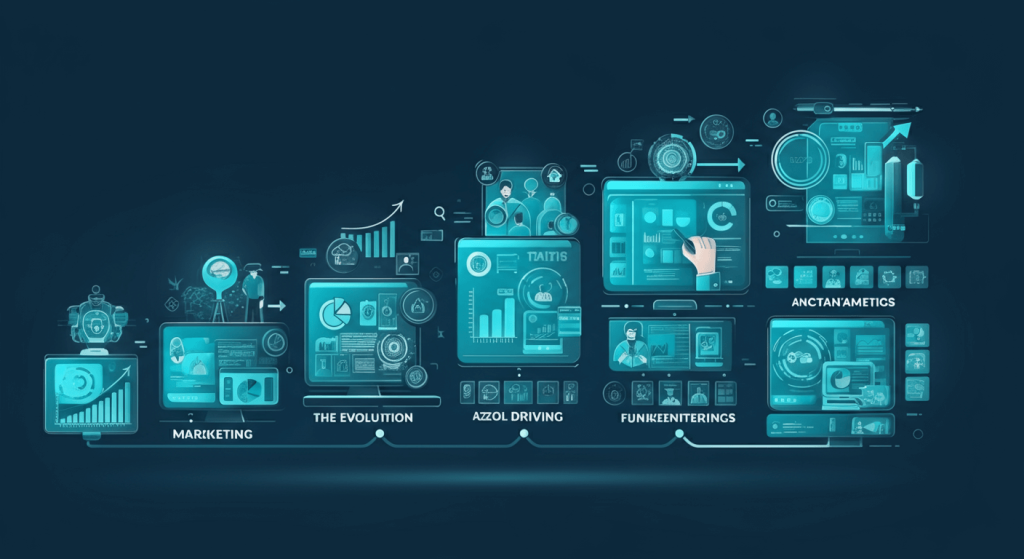
The summit showed that modern marketing thrives on first-party data, AI, real-time personalization, and privacy-focused strategies to create meaningful, measurable customer experiences.
The advertising landscape continues its rapid transformation, with data becoming the cornerstone of successful marketing strategies. The Ad Age Data-Driven Marketing Summit recently brought together industry leaders, innovative brands, and technology pioneers to explore how businesses can harness the power of data to drive meaningful customer connections and measurable results.
This premier industry event showcased cutting-edge approaches to data-driven marketing, revealing how forward-thinking companies are leveraging analytics, artificial intelligence, and consumer insights to stay ahead of the competition. From personalization at scale to privacy-compliant measurement strategies, the summit highlighted the most pressing challenges and opportunities facing marketers today.
The discussions and presentations at the summit provided valuable insights into the current state of data-driven marketing and offered a glimpse into the future of customer engagement. Here’s what industry professionals need to know about the key themes, innovations, and strategies that emerged from this important gathering.
The Evolution of Data-Driven Marketing Strategies
Modern marketing has undergone a fundamental shift from broad-based advertising to precision-targeted campaigns. The summit emphasized how successful brands are moving beyond basic demographic targeting to create sophisticated customer profiles using behavioral data, predictive analytics, and real-time engagement metrics.
Leading marketers shared how they’re building comprehensive data ecosystems that connect customer touchpoints across multiple channels. This holistic approach allows brands to understand the complete customer journey, from initial awareness through post-purchase advocacy. The most successful companies are those that can seamlessly integrate data from social media, email campaigns, website interactions, and offline purchases to create a unified view of their customers.
The conversation also highlighted the importance of moving from reactive to predictive marketing approaches. Rather than simply analyzing what happened after a campaign, data-driven marketers are using advanced analytics to anticipate customer needs and behaviors before they occur.

Privacy-First Marketing in a Cookieless Future
One of the most significant themes at the summit was the ongoing transition to privacy-first marketing practices. With the deprecation of third-party cookies and increasing consumer privacy concerns, marketers are reimagining how they collect, process, and utilize customer data. Brands that excel in this area focus on privacy-compliant data strategies to build direct relationships with customers.
Industry experts discussed the rise of first-party data strategies, emphasizing the critical importance of building direct relationships with customers. Brands that excel in this area are creating valuable content experiences and loyalty programs that encourage customers to willingly share their information in exchange for personalized value.
The summit also explored emerging technologies like contextual advertising and privacy-preserving analytics. These solutions allow marketers to deliver relevant messages without compromising individual privacy, creating a win-win scenario for both brands and consumers.
Zero-party data emerged as another crucial concept, with speakers highlighting how surveys, quizzes, and interactive content can provide explicit customer preferences while respecting privacy boundaries. This approach enables highly personalized marketing while maintaining transparency and trust.
Artificial Intelligence and Machine Learning Applications
The integration of AI into marketing operations took center stage at the summit. Presenters demonstrated how AI-powered tools are revolutionizing everything from content creation to customer segmentation to campaign optimization. AI is particularly impactful in programmatic advertising, where machine learning algorithms automate targeting, bidding, and ad delivery.
Machine learning algorithms are enabling marketers to process vast amounts of data at unprecedented speed, identifying patterns and opportunities that would be impossible to detect manually. These technologies are particularly powerful for dynamic pricing strategies, recommendation engines, and automated bidding in programmatic advertising.
Natural language processing and generative AI were highlighted as game-changing technologies for content marketing. Several brands shared case studies showing how they’re using AI to create personalized email subject lines, social media posts, and even video content at scale while maintaining brand voice and authenticity.
The discussion also covered the importance of human-AI collaboration, emphasizing that the most successful implementations combine technological capability with human creativity and strategic thinking.
Real-Time Personalization and Customer Experience
The summit showcased how leading brands are implementing real-time personalization across all customer touchpoints. This goes far beyond simply inserting a customer’s name into an email—it involves dynamically adjusting content, product recommendations, and entire user experiences based on immediate behavioral signals.
Advanced personalization engines are now capable of considering hundreds of variables simultaneously, including browsing history, purchase patterns, seasonal trends, and even external factors like weather or local events. This level of sophistication allows brands to deliver highly relevant experiences that feel genuinely helpful rather than intrusive.
The conversation also emphasized the importance of testing and optimization in personalization efforts. Successful brands are constantly running experiments to understand which personalization tactics drive the best results for different customer segments.
Cross-channel consistency emerged as a critical factor in personalization success. Customers expect their preferences and interactions to be recognized whether they’re engaging via mobile app, website, email, or in-store experiences.

Measurement and Attribution Challenges
Attribution modeling and measurement strategies were hot topics throughout the summit. With customers engaging across multiple touchpoints and devices, determining which marketing efforts deserve credit for conversions has become increasingly complex. Tools like KPI tracking platforms are now essential for modern marketing measurement.
Industry leaders shared innovative approaches to multi-touch attribution, including the use of incrementality testing and marketing mix modeling. These methodologies help marketers understand the true impact of their campaigns and optimize budget allocation across channels.
The summit also addressed the growing importance of upper-funnel metrics and brand awareness measurement. As competition intensifies, brands are recognizing that traditional last-click attribution may undervalue activities that build brand recognition and consideration.
Advanced analytics platforms were highlighted as essential tools for modern measurement, enabling marketers to create custom attribution models that reflect their specific business objectives and customer journey patterns.
Integration of Offline and Online Data
The convergence of digital and physical customer experiences was another key theme at the summit. Retailers and service providers shared strategies for connecting online behavior with in-store purchases, creating a complete picture of customer value and preferences.
Location-based marketing and beacon technology are enabling unprecedented insights into customer behavior patterns. Brands can now understand how digital advertising influences foot traffic and in-store purchases, leading to more accurate ROI calculations and better budget allocation decisions.
The discussion also covered the technical challenges of data integration, including identity resolution across devices and channels. Successful companies are investing in customer data platforms (CDPs) that can unify disparate data sources into actionable customer profiles.
The Future of Data-Driven Marketing
Looking ahead, summit speakers identified several emerging trends that will shape the future of data-driven marketing, including voice search optimization, augmented reality experiences, IoT data, and blockchain-based identity solutions. Sustainable and ethical practices are becoming central, with consumers more conscious of how their data is used. For a deeper dive, check out unlocking growth with data-driven marketing solutions.
The rise of Web3 technologies and blockchain-based identity solutions may also transform how marketers approach data ownership and customer relationships. While still in early stages, these technologies could enable new models of value exchange between brands and consumers.
Sustainability and social responsibility are becoming important factors in data-driven marketing strategies. Consumers are increasingly conscious of how their data is used and are more likely to engage with brands that demonstrate ethical data practices and social impact.

The Rise of Creative Data Collaboration Between Brands and Technology Partners
Another powerful theme emerging from the Ad Age Data-Driven Marketing Summit was the increasing collaboration between brands, agencies, and technology partners to unlock deeper insights and develop more innovative marketing solutions. As the data ecosystem becomes more complex, no single organization—no matter how large—can manage every aspect of data collection, analysis, and activation alone. This has given rise to a new era of strategic partnership models where creativity and technology intersect.
Speakers highlighted how brands are partnering with adtech and martech companies to co-develop advanced segmentation frameworks, build custom analytics dashboards, and integrate machine learning models directly into campaign workflows. These collaborations allow brands to tap into the specialist expertise of engineers, data scientists, and AI researchers, accelerating their ability to make sense of fragmented datasets and implement sophisticated activation strategies.
One of the most compelling examples shared involved retail brands collaborating with cloud technology providers to create secure data clean rooms. These environments allow companies to combine their own first-party data with aggregated platform data—from partners like Google, Meta, and retail media networks—without exposing personally identifiable information. The result is a deeper understanding of cross-platform performance and more accurate audience targeting, all while respecting privacy regulations.
Agencies are also playing a transformative role in helping brands build data maturity. Rather than acting solely as campaign executors, modern agencies are becoming long-term data strategy partners, guiding clients through complex decisions around CDP implementation, governance frameworks, AI ethics, and predictive modeling pipelines. This shift underscores how creative storytelling and technical innovation can work together to drive more relevant and measurable marketing experiences.
The rise of these collaborative ecosystems signals a broader industry trend: data-driven marketing is no longer the domain of individual teams or tools. It is a multidisciplinary effort that requires strong partnerships, shared objectives, and a commitment to experimentation. The brands that excel in this collaborative landscape are those that view data as a shared asset—not a siloed resource—and leverage collective intelligence to achieve continuous innovation.
Strengthening Organizational Culture Around Data

A recurring message at the summit was that successful data-driven marketing requires more than technology—it requires a cultural shift within organizations. Many speakers emphasized that even the most advanced tools fail if internal teams lack the skills, mindset, or alignment needed to use them effectively.
Leading organizations are investing heavily in data literacy programs, ensuring that everyone from marketing associates to senior executives understands how to interpret analytics, evaluate predictive insights, and make informed decisions. This democratization of data empowers teams to act faster, reduces dependency on specialized analysts, and encourages innovation at every level.
The summit also revealed the importance of breaking down departmental silos. Marketing, sales, product, data science, and customer service teams must work from the same data sources and share unified KPIs. When organizations align their goals, insights flow more freely, enabling truly customer-centric strategies.
Speakers encouraged leaders to foster cultures where experimentation is not only accepted but encouraged. Teams that constantly test hypotheses, measure outcomes, and iterate are far better positioned to adapt to marketplace shifts. As data-driven marketing evolves, agility and openness to change become defining characteristics of category-leading brands.
Ultimately, the organizations that prosper are those that embed data into their decision-making DNA, creating environments where creativity, analytics, and technology work together seamlessly.
Taking Action on Data-Driven Marketing Insights
The Ad Age Data-Driven Marketing Summit reinforced that success in modern marketing requires a fundamental commitment to data-driven decision-making. By collecting high-quality first-party data, investing in AI, and embracing privacy-focused strategies, marketers can deliver meaningful customer experiences and drive sustainable business growth. Learn practical steps in how to develop a data-driven marketing strategy.
For marketers looking to advance their data-driven capabilities, the summit highlighted the importance of starting with clear objectives and gradually building more sophisticated approaches. Focus on collecting high-quality first-party data, invest in the right technology platforms, and prioritize customer privacy and transparency.
The future belongs to brands that can seamlessly blend human creativity with data-driven insights to create meaningful customer experiences. By embracing the strategies and technologies discussed at the summit, marketers can build stronger customer relationships and drive sustainable business growth.
What is the biggest shift happening in data-driven marketing today?
The biggest transformation is the shift from third-party data to first-party and zero-party data strategies. As privacy regulations tighten and cookies disappear, brands are focusing on building direct relationships and collecting consent-based data. This enables more accurate personalization while maintaining user trust and compliance.
How can brands prepare for a cookieless future?
Brands should prioritize collecting high-quality first-party data through loyalty programs, gated content, interactive tools, and enhanced customer experiences. Investing in server-side tracking, contextual targeting, and privacy-preserving analytics technologies will also ensure they remain competitive in a privacy-first ecosystem.
What role does artificial intelligence play in modern marketing?
AI is transforming nearly every aspect of marketing—from automating segmentation and optimizing bidding strategies to generating personalized content and predicting future customer behaviors. It accelerates analysis, enhances personalization, and helps marketers deliver relevant experiences at scale. Importantly, human creativity remains essential to guide AI and ensure brand authenticity.
How are brands using real-time personalization effectively?
Brands are using real-time behavioral signals—like browsing patterns, location, and past purchases—to dynamically update product recommendations, on-page content, and promotional messages. This results in experiences that feel intuitive and individualized rather than generic, significantly improving engagement and conversion rates.
Why is cross-channel consistency so important?
Customers interact with brands across many touchpoints—mobile apps, websites, email, physical stores, and social platforms. Consistency ensures that customer preferences, previous interactions, and key messaging remain aligned across every channel. This creates seamless journeys that improve trust, satisfaction, and conversions.
What tools help unify offline and online customer data?
Customer data platforms (CDPs), data clean rooms, and advanced identity resolution systems help unify data across touchpoints. These tools consolidate retail transactions, website interactions, app behavior, CRM data, and ad impressions into cohesive customer profiles, enabling more accurate targeting and measurement.
Leave a Reply